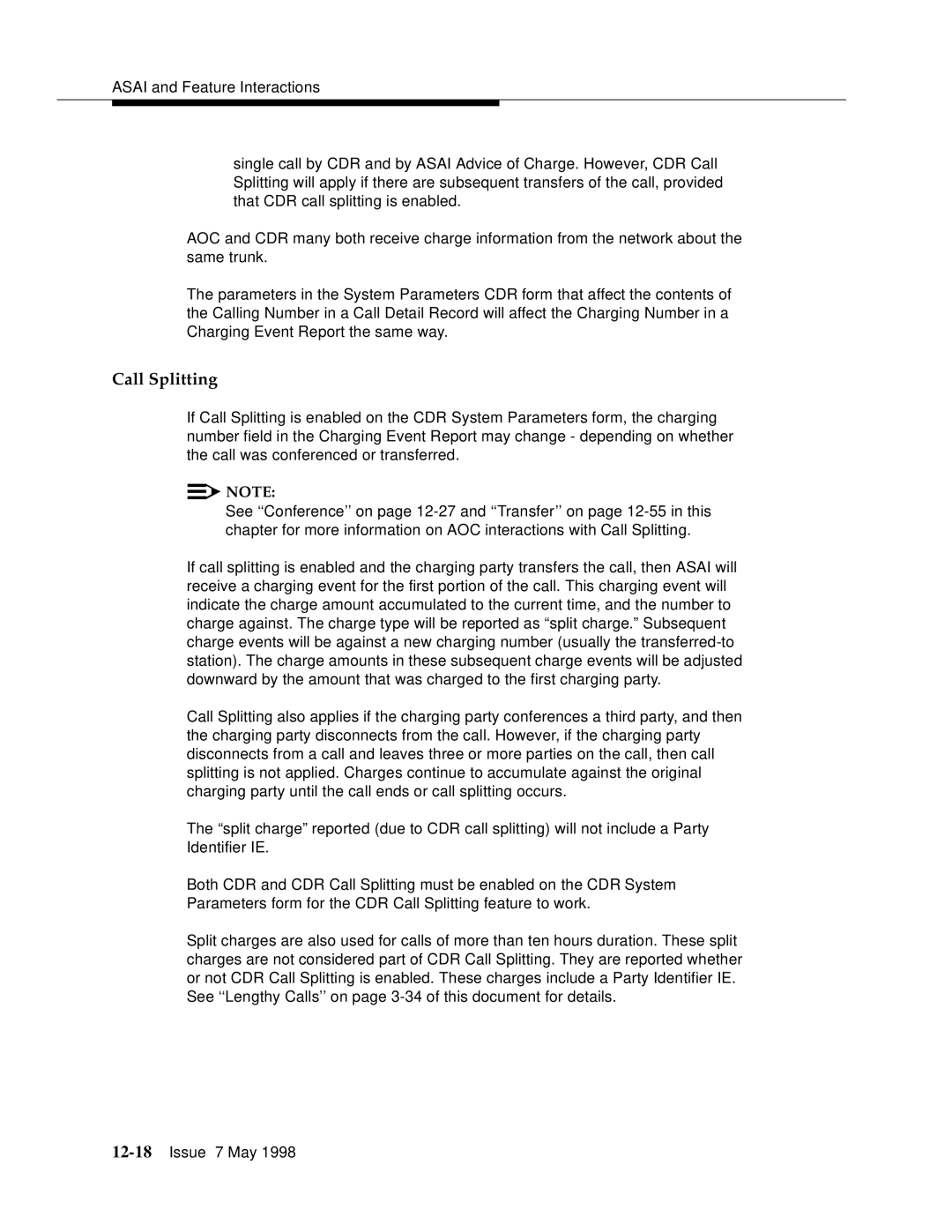
ASAI and Feature Interactions
single call by CDR and by ASAI Advice of Charge. However, CDR Call Splitting will apply if there are subsequent transfers of the call, provided that CDR call splitting is enabled.
AOC and CDR many both receive charge information from the network about the same trunk.
The parameters in the System Parameters CDR form that affect the contents of the Calling Number in a Call Detail Record will affect the Charging Number in a Charging Event Report the same way.
Call Splitting
If Call Splitting is enabled on the CDR System Parameters form, the charging number field in the Charging Event Report may change - depending on whether the call was conferenced or transferred.
![]()
![]() NOTE:
NOTE:
See ‘‘Conference’’ on page
If call splitting is enabled and the charging party transfers the call, then ASAI will receive a charging event for the first portion of the call. This charging event will indicate the charge amount accumulated to the current time, and the number to charge against. The charge type will be reported as “split charge.” Subsequent charge events will be against a new charging number (usually the
Call Splitting also applies if the charging party conferences a third party, and then the charging party disconnects from the call. However, if the charging party disconnects from a call and leaves three or more parties on the call, then call splitting is not applied. Charges continue to accumulate against the original charging party until the call ends or call splitting occurs.
The “split charge” reported (due to CDR call splitting) will not include a Party Identifier IE.
Both CDR and CDR Call Splitting must be enabled on the CDR System Parameters form for the CDR Call Splitting feature to work.
Split charges are also used for calls of more than ten hours duration. These split charges are not considered part of CDR Call Splitting. They are reported whether or not CDR Call Splitting is enabled. These charges include a Party Identifier IE. See ‘‘Lengthy Calls’’ on page
